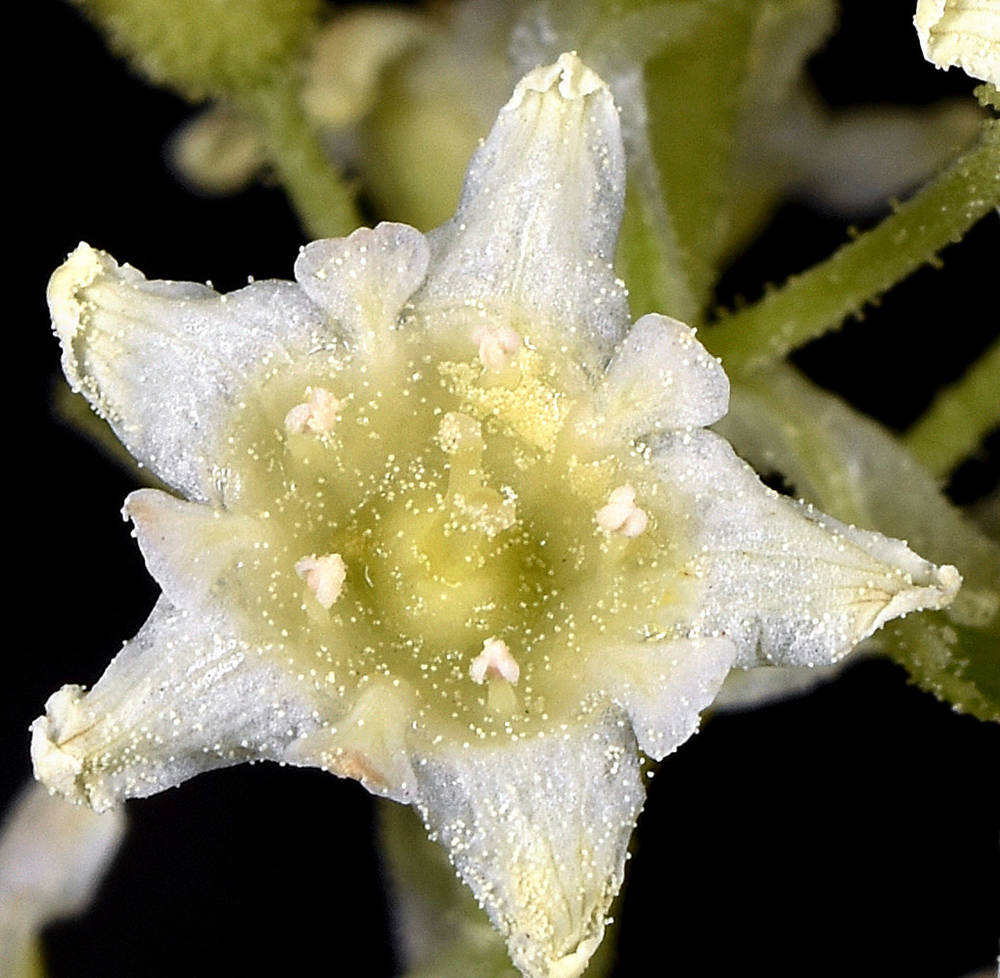
[This taxon will be assessed for treatment in volume 3 of Flora of Oregon, which is not yet published.]
as described under Ribes wolfii
Plants 1-5 m. Stems spreading to erect, finely crisped-puberulent, stipitate-glandular and with black, sessile glands; spines at nodes absent; prickles on internodes absent. Leaves: petiole (1-)1.7-4.5(-6) cm, finely crisped-puberulent, with colorless, stipitate and sessile glands, stipitate glands on margins of stipular expansion; blade rectangular, 3-5-lobed, shallowly to deeply cleft, 2-6(-7.5) cm, base cordate, surfaces glabrous or sparsely pubescent, ciliate, sometimes with dark, stipitate or sessile, minute glands, especially abaxially, lobes nearly triangular, margins dentate, apex acute to broadly obtuse. Inflorescences erect to spreading, (5-)7-25-flowered racemes, (3.5-)4.5-9.5(-12) cm, axis finely crisped-puberulent and stipitate-glandular, flowers evenly spaced. Pedicels jointed, (0.5-)1.5-6(-8.3) mm, finely crisped-puberulent and stipitate-glandular; bracts elliptic-lanceolate, (2.8-)3-5.2(-7) mm, puberulent-glandular. Flowers: hypanthium greenish or pinkish, cup-shaped to turbinate, (0.8-)1.2-1.5(-2.1) mm, surfaces with scattered or dense, yellow or green, stipitate glands abaxially, glabrous adaxially; sepals not overlapping, spreading, greenish or pinkish, lanceolate to elliptic-lanceolate, (2-)3.3-4.1 mm; petals widely separated, erect, cream, yellowish green, or pinkish, obovate or flabellate-cuneate, not conspicuously revolute or inrolled, 0.9-1.5 mm; nectary disc not seen; stamens slightly longer than petals; filaments linear to slightly broader at base, 0.8-1.2 mm, glabrous; anthers cream, oval, 0.5-0.6 mm, apex with dark, small depression; ovary glandular-pubescent with green, yellow, or colorless, short-stipitate glands; styles nearly distinct or connate to 1/2 their lengths, 1-2 mm, glabrous. Berries palatable, black, ovoid, 3-12 mm, glandular-pubescent.Flowering May-Aug. Moist woods and meadows; 1600-3800 m; Ariz., Colo., Idaho, N.Mex., Oreg., Utah, Wash.Ribes mogollonicum is included here in R. wolfii because the two taxa, morphologically, seem to overlap completely. A. E. Senters and D. E. Soltis (2003) placed R. mogollonicum near R. viscosissimum and R. erythrocarpum.